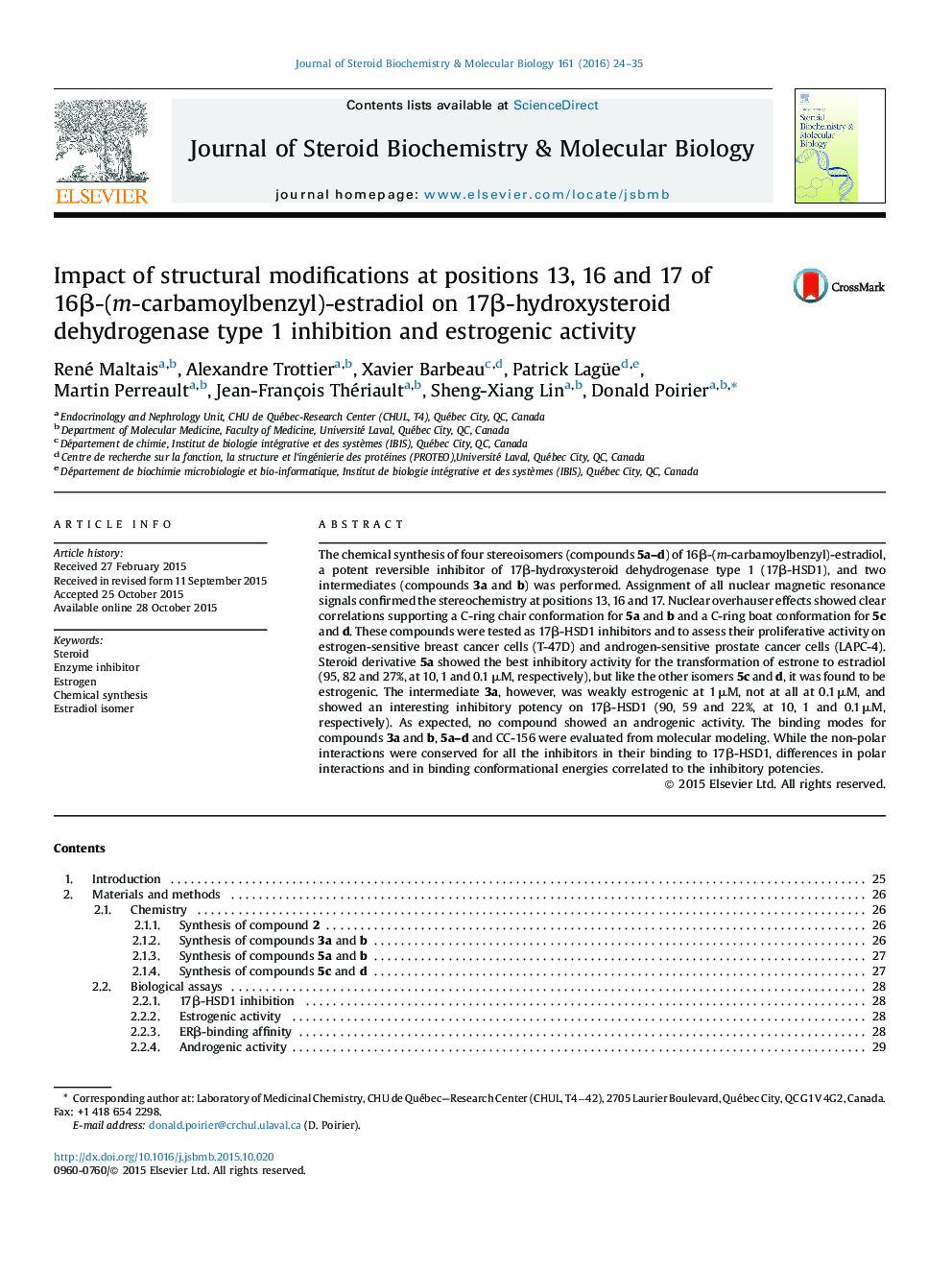| کد مقاله | کد نشریه | سال انتشار | مقاله انگلیسی | نسخه تمام متن |
|---|---|---|---|---|
| 1991240 | 1540987 | 2016 | 12 صفحه PDF | دانلود رایگان |

• Stereoisomers at positions 13, 16 and 17 of a steroid 17β-HSD1 inhibitor were prepared and characterized.
• Methyl-18 inversion, from β to α face, is harmful to inhibition of 17β-HSD1.
• Methyl-18 inversion, from β to α face, reduces undesirable estrogenic activity.
• Compound 3a provides the best compromise between 17β-HSD1 inhibition and non estrogenicity.
• Two enzyme-compound interactions were observed by molecular modeling.
The chemical synthesis of four stereoisomers (compounds 5a–d) of 16β-(m-carbamoylbenzyl)-estradiol, a potent reversible inhibitor of 17β-hydroxysteroid dehydrogenase type 1 (17β-HSD1), and two intermediates (compounds 3a and b) was performed. Assignment of all nuclear magnetic resonance signals confirmed the stereochemistry at positions 13, 16 and 17. Nuclear overhauser effects showed clear correlations supporting a C-ring chair conformation for 5a and b and a C-ring boat conformation for 5c and d. These compounds were tested as 17β-HSD1 inhibitors and to assess their proliferative activity on estrogen-sensitive breast cancer cells (T-47D) and androgen-sensitive prostate cancer cells (LAPC-4). Steroid derivative 5a showed the best inhibitory activity for the transformation of estrone to estradiol (95, 82 and 27%, at 10, 1 and 0.1 μM, respectively), but like the other isomers 5c and d, it was found to be estrogenic. The intermediate 3a, however, was weakly estrogenic at 1 μM, not at all at 0.1 μM, and showed an interesting inhibitory potency on 17β-HSD1 (90, 59 and 22%, at 10, 1 and 0.1 μM, respectively). As expected, no compound showed an androgenic activity. The binding modes for compounds 3a and b, 5a–d and CC-156 were evaluated from molecular modeling. While the non-polar interactions were conserved for all the inhibitors in their binding to 17β-HSD1, differences in polar interactions and in binding conformational energies correlated to the inhibitory potencies.
Figure optionsDownload as PowerPoint slide
Journal: The Journal of Steroid Biochemistry and Molecular Biology - Volume 161, July 2016, Pages 24–35